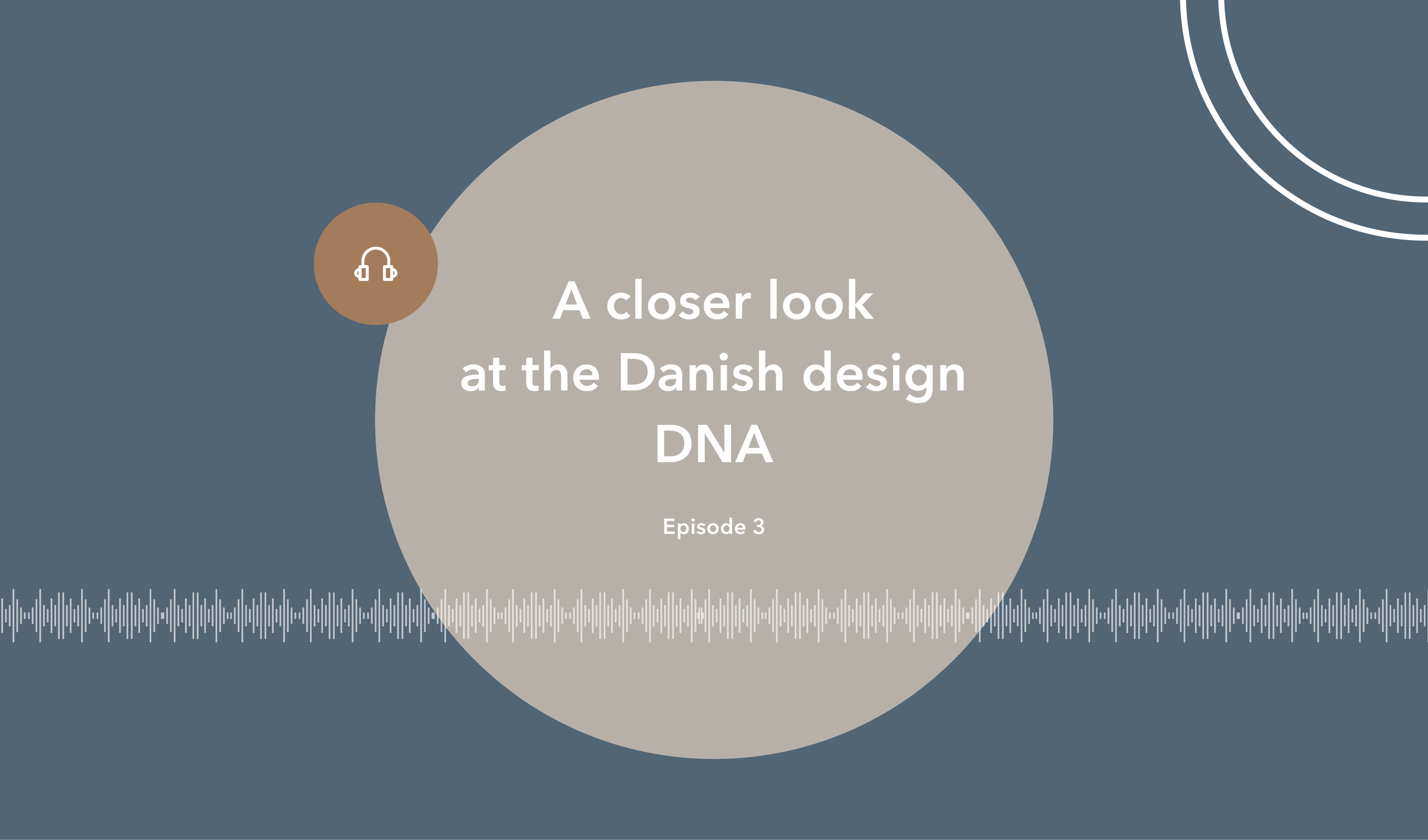
In our last episode, we learned about the origins of the Danish Design DNA. If you haven't heard it, you should go back and listen now.
In 2017, the Danish Design Council saw a need to redefine Danish design for the 21st century. If American design is business and German design is science and Italian design is art, then what is Danish design in the 20th century? It was arguably craftsmanship, and that's still a key element today.
But design can play a key role in solving the challenges we face in. The world today. Things like climate change, using our resources wisely. The 10 strands of the Danish design DNA reflect that.
It contains not only the heritage of Danish design, but the future as well. The 10 strands can be boiled down to 10 simple values: social, human holistic quality, user driven, transformative craft, durable, factual and simple.
We discussed the holistic value with industrial designer Lars Thøgersen.
Lars: I think a lot of Danish designers work with holism...
Julie: Holistic thinking?
Lars: Holistic, holistic thinking
Julie: Looking at the whole.
Lars: The whole. Exactly. And that is what we tend to do. I mean, we can't solve a problem by creating a problem for someone else in that value chain or in that context or in that user-specific situation. or whatever we're talking about. And then also suddenly, with that little twinkle of aesthetics and something beautiful that makes it attractive to the people using it, whatever it be, and that might be a service or a product.
Julie: Yeah. Yeah, yeah. So. So of course it could be design thinking is like something big. It isn't necessarily a physical product.
Lars: No. Exactly. And I think for my own case, I have been working very much with what you would characterise as system design. Uh working in value chains where you by the name of that, the whole context is that it is whatever process going from one part to another part. It can be a different organisation or different departments within an organisation or between different organisation or even companies. Because I think a lot of companies today and organisations, have realised that they have done a lot of silo thinking and a lot of optimisation within that silo.
But the way forward will be to sort of go above that and look at the whole and see how can we, for the whole matter that we are organising here, whether that is product, services, organisations, whatever. hink it all through amd see how you get it to work the best.
So this ability of taking in other professions, that being of engineers or social entrepreneurs like anthropologists and all these kinds of expertise. You can often see the designer working as as sort of the umbrella on that, pulling on all the different professions that comes to play in a given case.
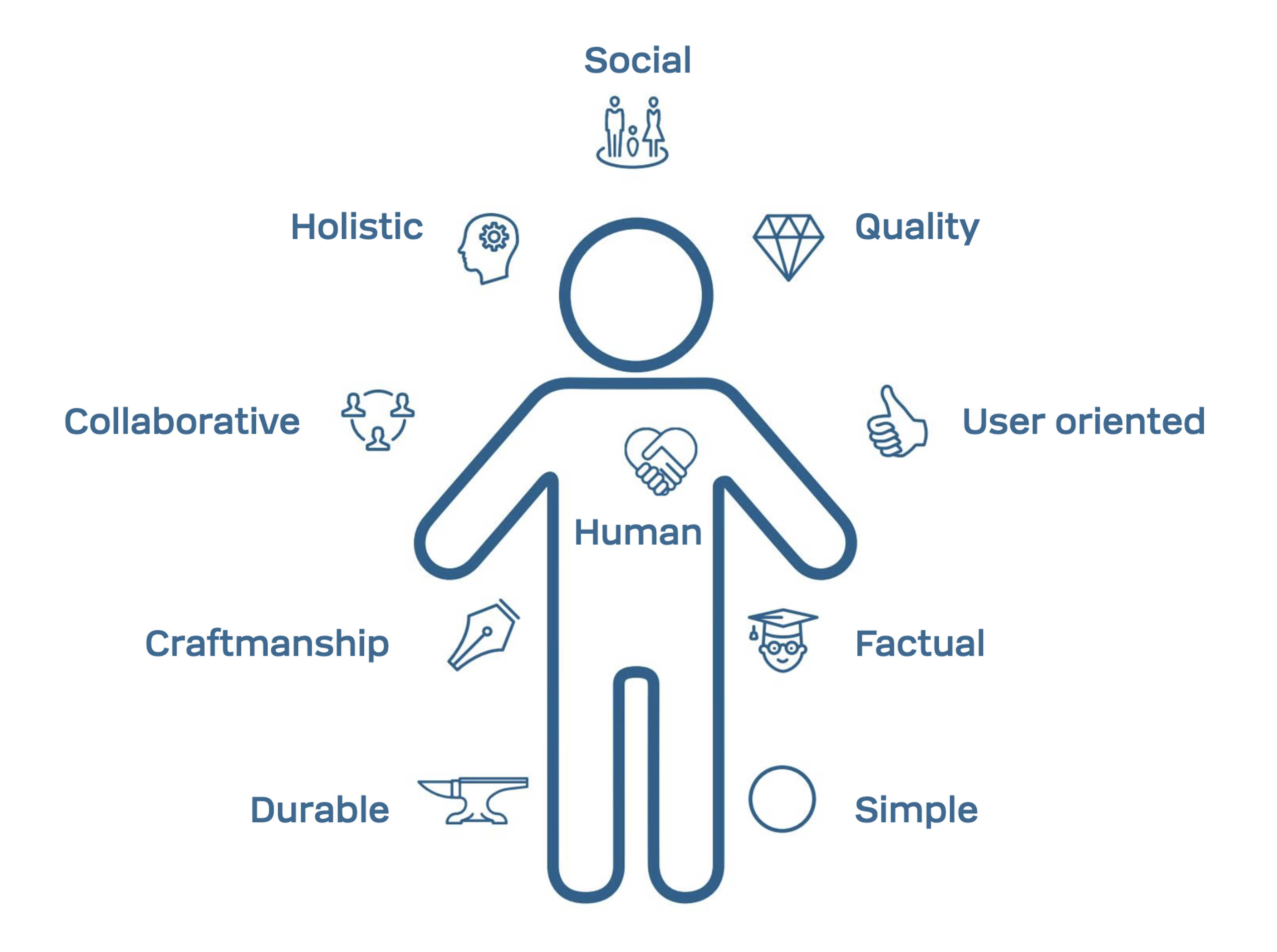
This ability to use design to solve larger problems demands a holistic view. We find that it can be difficult to talk about the 10 values separately because they're so interwoven, they very easily flow into one another.
But that's why the whole idea of it as a DNA is so powerful. The individual strands are what makes up the whole. In our conversation, we kept coming back to the social aspect.
Julie: I realise that of course the DNA is meant to be seen as a whole, but can we talk about some of them individually, like social...like you, you mentioned social.
Lars: Yeah, sure. Well, I think in many ways, very often when foreigners come to Denmark, they notice how designed a society we are — the cities, the way we go about each other, and the whole situation, the whole of getting to Denmark, which is a book coming up.
Getting to Denmark in terms of getting to the social welfare society that we have become. And so I think this social democracy, you could say, or social welfare establishment of a society is very much based on design actually or vice versa.
So they are, in some respect, part of each other and have supported each other all the way through. So. I don't like the term too much about "democratic design" because it sort of tells what then I'm not part of the democratic design so I'm not democratic or what? Of course not again.
But I understand Democratic design in the sense of making it affordable for a lot of people. Because there are a lot of Danish design classics specifically within furniture, that are very expensive. And the reason being that they are either in limited numbers, they are maybe from material and handling of something that still encounters some kind of handcrafting around it. So it's not maybe as industrialised as something you just inject in a mold and get a ready piece out.
So for this reason, I think that the social part of it is making it affordable for many, for the masses, so to speak, but still reflecting on all the values in terms of high quality, durability and the all these things that are also characteristic for Danish design.
In Kvik, we actually love the notion of democratising Danish design and making it available and affordable for everyone, and we'll talk more about that a bit later in this episode.
But for now, it seems that once again, the strands of the Danish design DNA, just wamt to combine and resist our efforts to talk about them separately. We asked Sune Kjems, who worked on the communication around the Danish design DNA about the difficulty of talking about each strand individually.
Sune: It's interesting because there's all kinds of issues to it. That's a communication issue that 10 elements is a lot to remember.
Julie: It is. I always have to look at it, I must admit. And I've been like looking at lot.
Sune: And it's like the UN Sustainable Development goals where they have 17 and that's even more. And actually, you can say that it's only...it's actually only combining the elements that makes it Danish design.
Julie: Right.
Sune: Like you are not sustainable if you just take one of the sustainable development goals. So you need to look at all of them. So it's kind of a playing field or some parameters. You can relate to them or you can refer to them when you look at your own design. If you're a design company. This is a part of the Danish design tradition because it relates to..it's user-oriented, it's...
Julie: ...very simple. It's very functional. It's well made.
Sune: So I know of some that just use it in their branding and that's also cool.

It is cool, but it's time to move away from the theories and talk about what Danish design means to one of the designers we work with in Kvik.
Nikolaj Duve from SaysWho is a practitioner of Danish design. He designed our Ombra kitchen as well as our Corissa kitchen and our new bar stools. So we asked him to share his thoughts on Danish design.
Nikolaj: We are minimalists. I think we're born out of that we are also educated out of that, right. It's like from the 50s and 60s it's still in the process of getting the most out of the least somehow and then discovering beauty within that. So the whole idea of less is more. All these approaches to getting a lot of value out of a minimal amount somehow is, I think, a core quality in Danish design.
Not to say that it's about not doing enough. I think it coexists with the approach of wanting to solve something. Wanting to do design that is, you know, relevant for the ages. Which I think is a backbone, at least if you look at Danish design in terms of the classics that are out there today. They have like 30-40 years on the market, so to say and that's a hard thing to achieve. Because today things are just moving so fast, like trends are coming and going.

We spoke to our Head of Design, Claus Johnsen, who worked closely with Nikolaj on Ombra and Corissa, about how we try to achieve that timeless feeling in our designs.
Julie: What is it that sets Danish design apart?
Claus: I think it's authentic. It has a starting point with the functionality always. If it's the chair, then it has to be good to sit in. That's kind of the really basic stuff.
And then we are true. We make honest design and we use...the majority is wood or natural materials. So I think overall this authenticity is the most important thing of Danish design — where in Denmark we put the design and the craftsman together on the floor in their workshop. And then they create the designs there. So that's the knowledge about the materials and the knowledge about the production processes, the tooling and all that.
Julie: You just sort of bring together the right people who know the experts in every area and and bring that together. And that's kind of a hallmark of Danish design.
Claus: Yes. Yeah.
Julie: Is that what makes it democratic? And we talk about about it being democratic somehow? Is that part of it?
Claus: It is. It is. I think because then what the outcome is is something that can be mass produced. And mass produced doesn't mean bad quality. You can actually have the same or even better quality, but the price can come down if you produce more pieces of one chair or kitchen or whatever.
Julie: And like our, I mean, like Mano, we've had the we've been, we've been making Mano for almost 20 years .
Claus: Yeah, we have. And we revisit it and. We revisit Mano now and then, you know, just to make it better, give it a small facelift, but the the overall look is still there and it's still the same. And we preserve that and we we guard it because for us it's a classic.
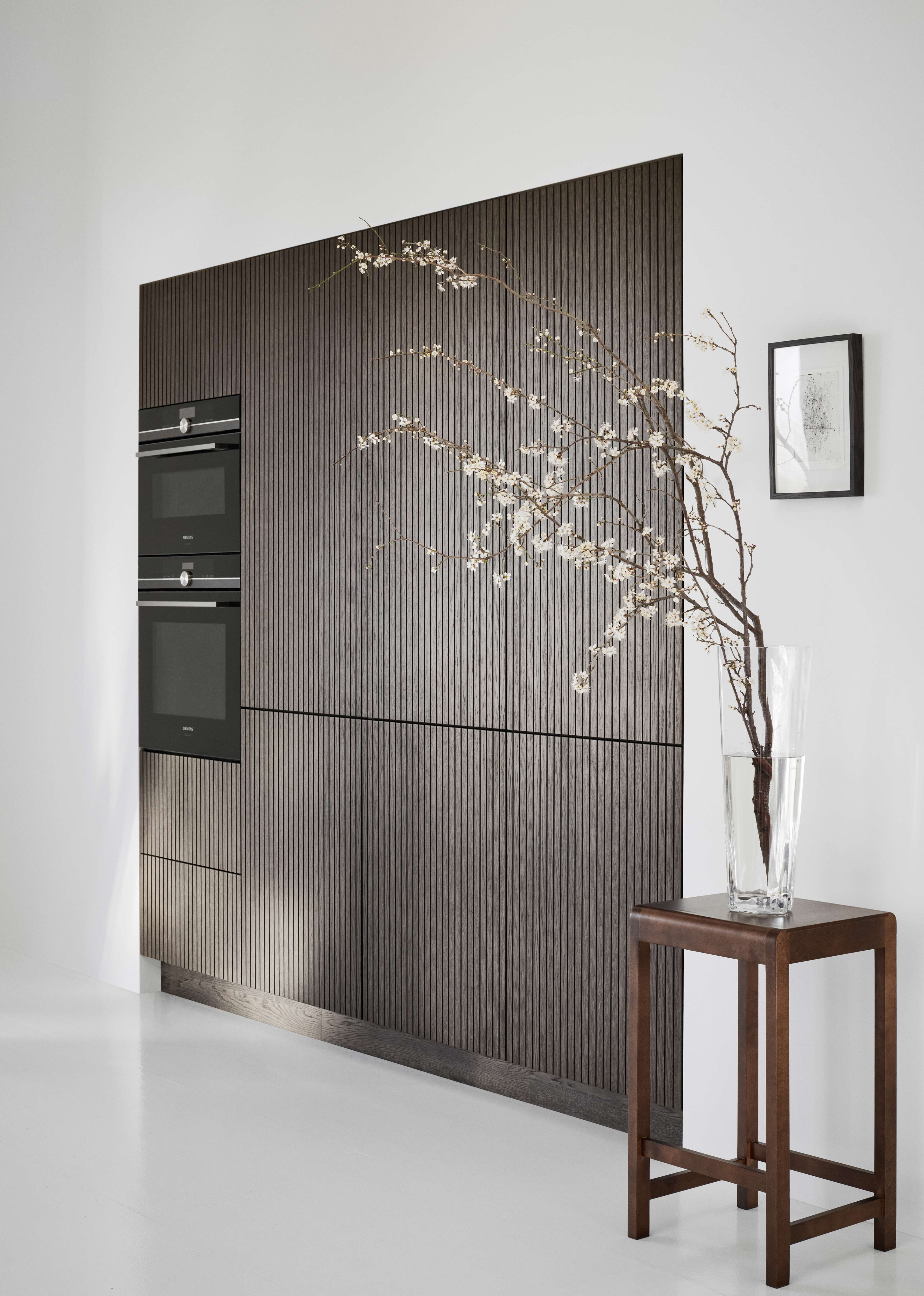
Just a quick note, Mano is our flagship kitchen design. We introduced it in 2004 and it's still one of our best-selling kitchens. In fact, we've just released a new colour — Arizona beige — which you can see in your local Kvik store. You can also get it in white, dark grey and a rich dark oak that we call Mano sera.
Now back to Claus.
Claus: I think one of our most important tasks is to democratise Danish design and hold on to the fact that Danish design is a success when it's available for the many.
Julie: For everybody, yeah.
Claus: It's it's so easy to make an outrageous, expensive kitchen that looks smashing, but it really not really sell because not a lot of people can afford it.
So we need to hold on to the fact that good quality and Danish design it should not be expensive. We call it democratising Danish design and it's a part of our business model that is price.
We're not afraid to talk about that.
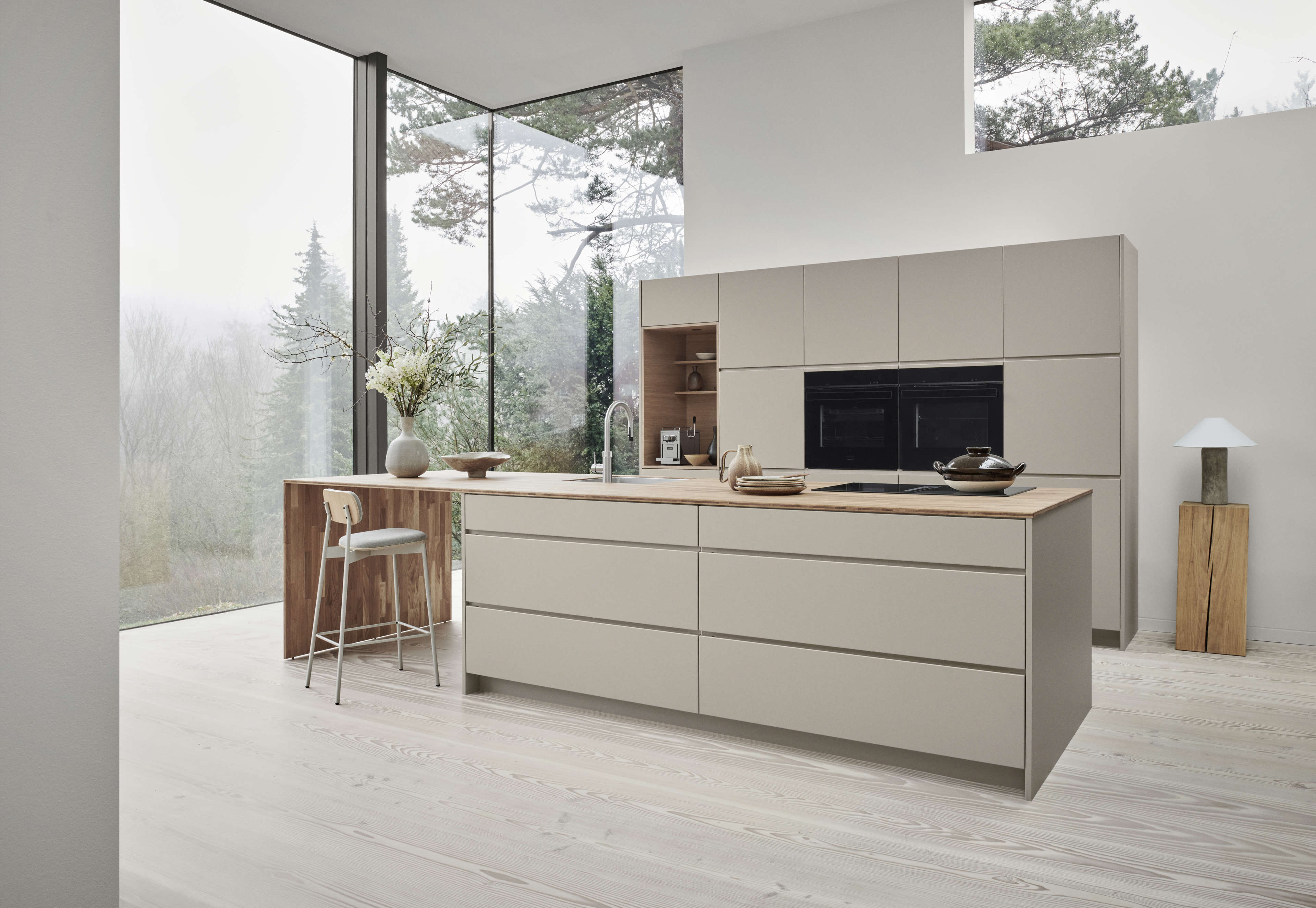
We will talk about it more in future episodes. If you haven't hit subscribe, please do so so you can get a notification when our next episode drops.
We often think of design resulting in a physical object, but the Danish design DNA gives us a lens for viewing design as something more. For example, a society can be designed or solutions to problems like climate change can be designed. Thinking in this way opens up a whole world of possibilities, and we'll explore those next time.
If you'd like to see any of the designs we discussed in this episode, just visit our website. You'll find a link in the show notes.
Thank you for listening.
The Sociable Kitchen® was produced this week by me, Julie Broberg and sound engineer Magnus Vad.
Special thanks to everyone who appeared in this episode — Lars Thøgersen and Sune Kjems from the Danish Design Council, Nikolaj Duve from SaysWho and Claus Johnsen, Kvik's Head of Design.
Additional recordings were produced at Mastertone studio in Copenhagen.
Our logo was created by our own graphic designer and brand guardian, Helle Krogh.
Our theme music was created for Kvik by Uncle Grey.
Produced at Feedback Studio in the old meatpacking district near the harbour in Aarhus.
Featured in this episode

Lars Thøgersen
Industrial Designer and former Chair of the Danish Design Council
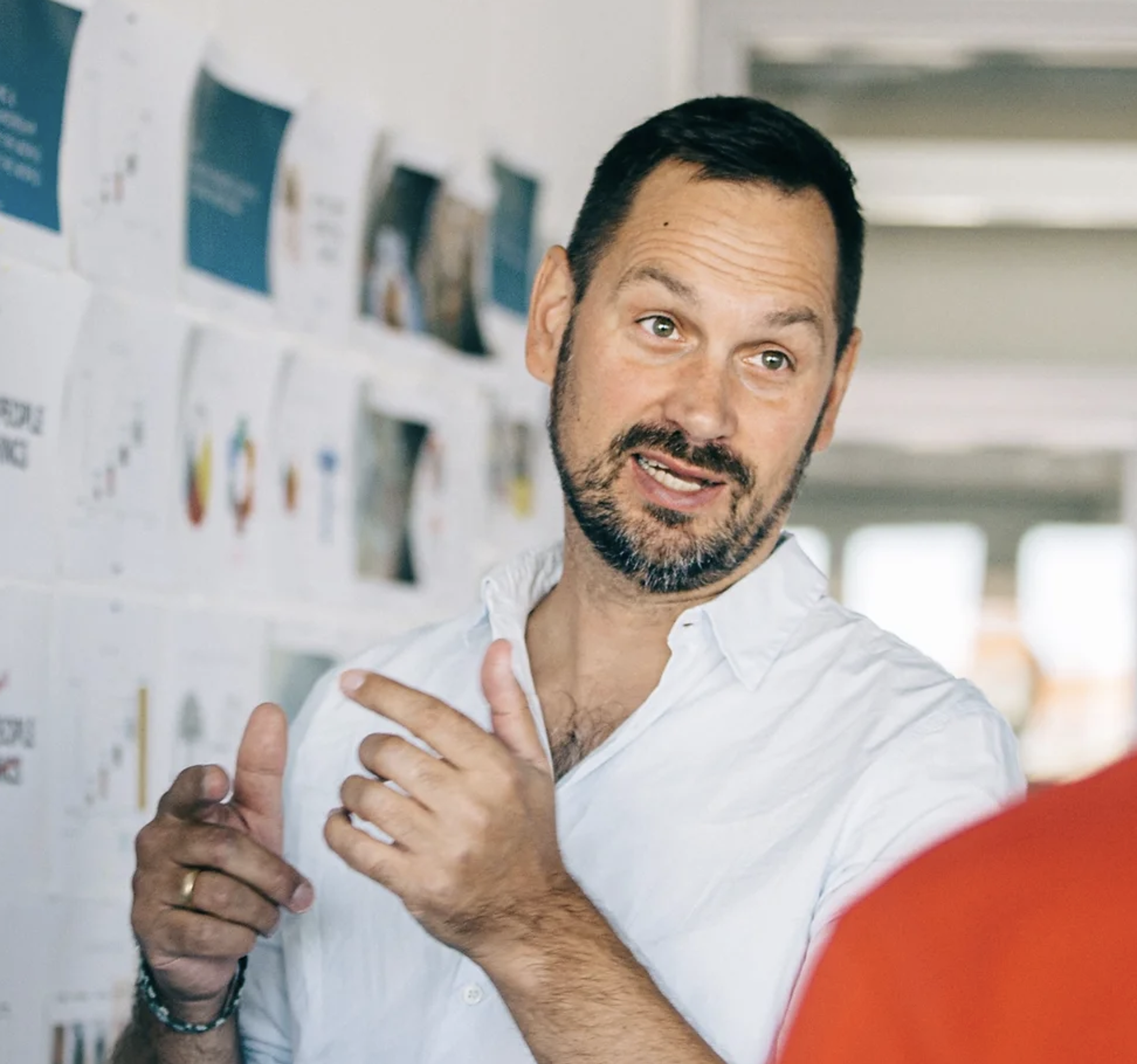
Sune Kjems
Founding Partner, Via Design
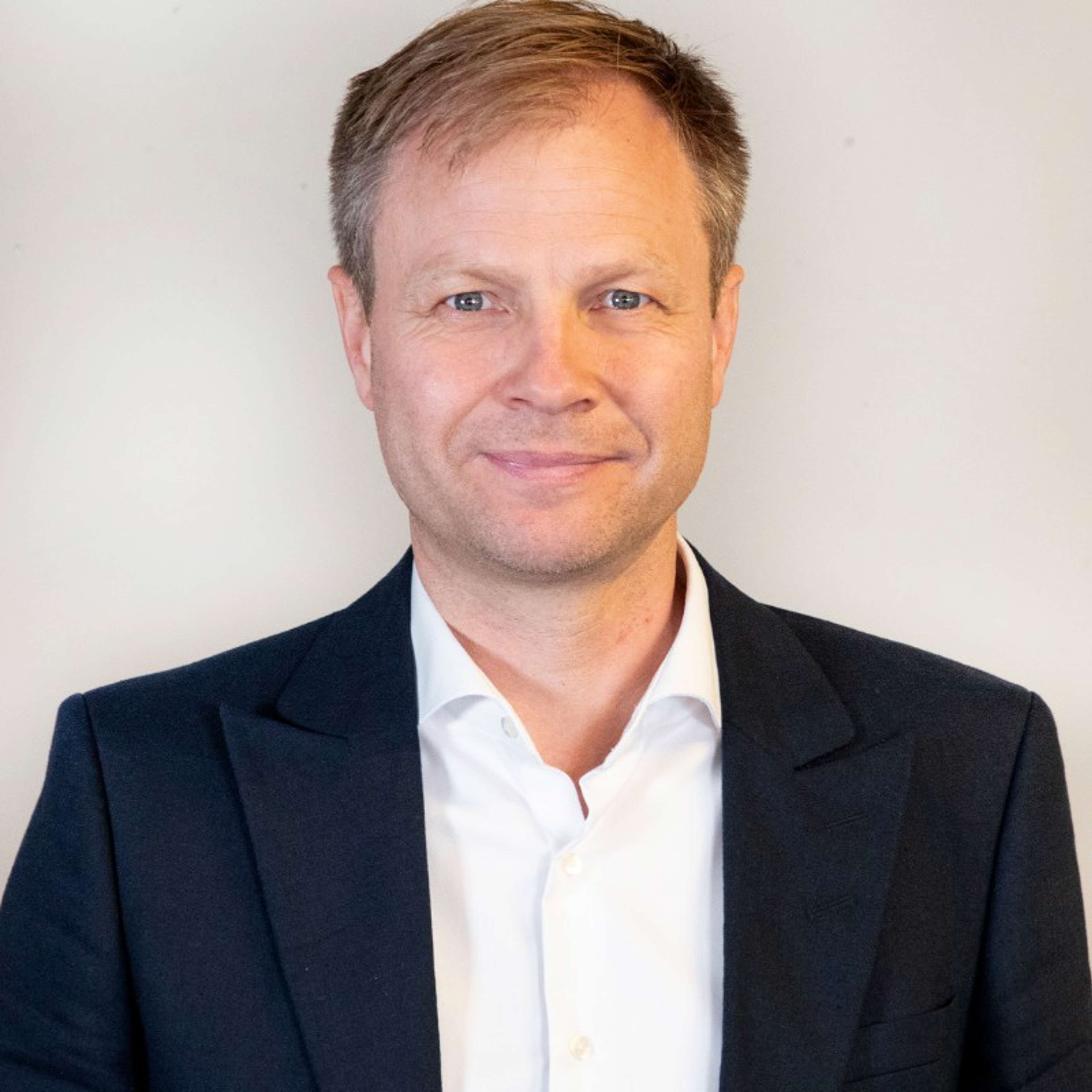
Claus Johnsen
Head of Design at Kvik
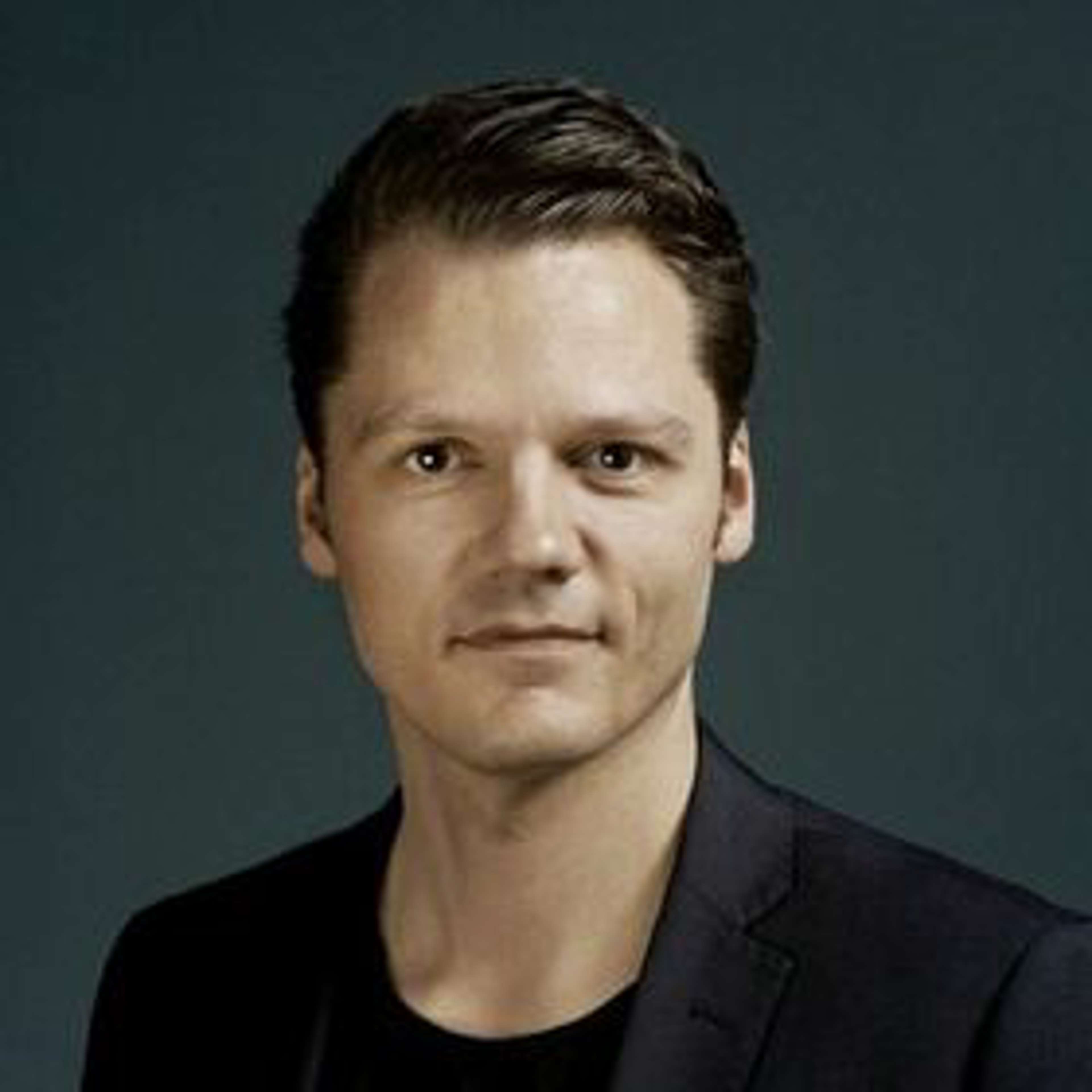
Nikolaj Duve
Head of Design & Co-Founder, SaysWho